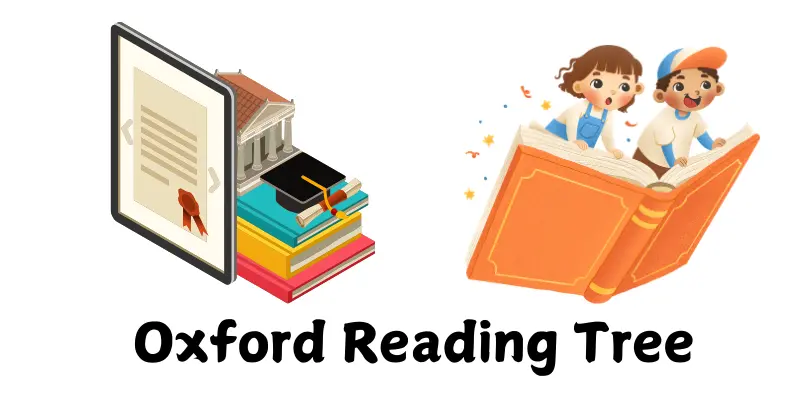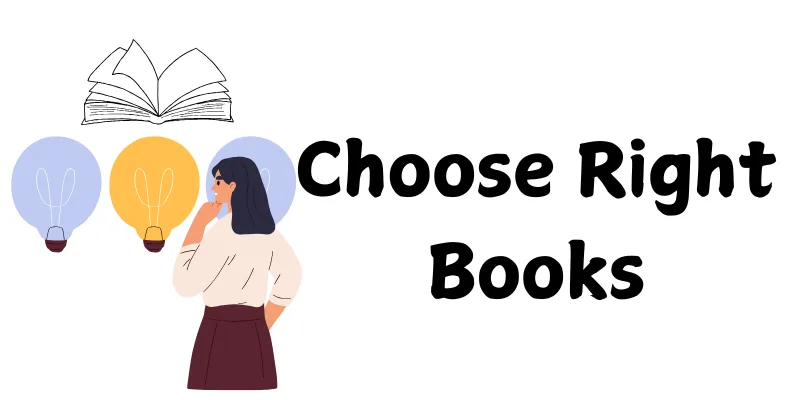Oxford Reading Tree Levels: A Complete Guide for Parents and Educators
Updated: 01 Jan 2025
363
Did you know that children who read books matched to their skill level are 80% more likely to enjoy reading?
Finding the right book can be a challenge for many parents—believe me, I’ve been there. When my child began reading, I felt lost with so many options to choose from. Then I came across Oxford Reading Tree levels, and everything started to fall into place. These levels provide a clear path to help young readers grow at their own pace.
Helping a child learn to read is one of the most rewarding experiences, but it can also be challenging when you’re unsure where to start. Thankfully, Oxford Reading Tree levels take the guesswork out of choosing the right books.

By matching your child’s current ability to the appropriate level, you’ll set them on the path to becoming a confident, lifelong reader. In this post, we’ll explore how these levels work and why they’re a game-changer for parents and educators alike.
Overview of the Oxford Reading Tree Program
The Oxford Reading Tree is one of the most popular reading schemes for children. It helps kids learn to read in a fun and engaging way. Created by Oxford University Press, this program has been a trusted resource for decades.
1. The Origins of the Program
The ORT program was developed by experts in education and literacy. It was created to make learning to read simple and enjoyable for young children. Backed by Oxford University Press, the program uses research-based methods to ensure effective results.
2. Purpose of the Oxford Reading Tree
The main goal of the Oxford Reading Tree is to foster early literacy skills. It introduces children to the world of reading step by step. Each level builds on the skills learned before, helping kids grow their confidence and abilities.
This program doesn’t just teach reading; it encourages a lifelong love for books.
3. Key Features of Oxford Reading Tree Books
Oxford Reading Tree books have several key features that make them highly effective for early literacy:
- Engaging Illustrations and Relatable Storylines
- Use of Repetitive Language
- Social and Emotional Development
- Fun Activities and Interactive Questions
4. Global Reach and Popularity
The Oxford Reading Tree is used in schools all around the world. Teachers and parents trust it because it delivers results. Whether you’re in the UK, Australia, or Asia, this program has become a key part of many classrooms.
Its popularity comes from its ability to adapt to the needs of all types of readers. Even non-native English-speaking children find the materials helpful and easy to understand.
5. Engaging Stories and Memorable Characters
What sets the Oxford Reading Tree apart is its use of exciting stories and lovable characters. Kids meet Biff, Chip, and Kipper—three siblings who take them on fun adventures. These characters make learning feel more like play than work.
The colorful illustrations and relatable storylines grab children’s attention and keep them engaged. They also spark creativity and imagination, which are key to a child’s overall development.
Read More: Popular Reading Level Measurement Systems.
Oxford Reading Tree Levels at a Glance
Let us now see how this system works:
| Stage | Approximate Age | Key Skills | Book Examples |
|---|---|---|---|
| Stage 1 | 3-4 years | Storytelling and comprehension using pictures. | Biff, Chip, and Kipper’s Adventures |
| Stages 2-3 | 4-5 years | Phonics, simple words, and short sentences. | Funny Fish, The Lost Teddy |
| Stages 4-6 | 5-6 years | Fluency and sight word recognition. | The Magic Key, The Secret Room |
| Stages 7-9 | 6-7 years | Comprehension and advanced vocabulary. | The Lost Key, Roderick’s Robot |
| Stages 10+ | 7+ years | Independent reading with complex stories. | The Quest, The Mountain Adventure |
Now let’s dive into each stage in detail.
Stage 1: Wordless Books to Develop Storytelling and Comprehension
Stage 1 is designed for very young learners, typically around 3 to 4 years old. At this stage, children aren’t reading words yet. Instead, they explore wordless books with vibrant illustrations.
Goal: To help children understand how stories work.
Skills Developed:
- Observing details in pictures.
- Learning to interpret emotions and actions.
- Building imagination by creating their own stories based on the images.
Example Books: First Stories or Getting Up. These books spark curiosity and prepare children for reading.
Also Read: reading levels in Kindergarten.
Stages 2-3: Introduction to Phonics and Short Sentences
At stages 2 and 3, children start learning the basics of reading. These levels are ideal for kids aged 4 to 5 years.
Focus:
- Introducing phonics (the sounds that letters make).
- Learning simple words and recognizing letters.
- Reading short sentences with the help of repetition.
Books at this stage often feature Biff, Chip, and Kipper. The characters engage young readers with fun stories while introducing new vocabulary.
Example Books: Funny Fish and The Lost Teddy.
Stages 4-6: Building Fluency and Sight Word Recognition
By stages 4 to 6, children (ages 5 to 6) begin reading with more confidence. These levels help them develop fluency and expand their vocabulary.
Key Skills:
- Recognizing common sight words like “the” or “and.”
- Reading longer sentences and simple paragraphs.
- Understanding basic story structure, such as beginnings and endings.
The texts become slightly more detailed, with relatable plots and everyday scenarios. Kids also encounter The Magic Key adventures, which are highly engaging and encourage them to read more independently.
Example Books: The Magic Key and The Secret Room.
Stages 7-9: Developing Comprehension with Challenging Vocabulary
Stages 7 to 9 target children aged 6 to 7 who are ready to tackle more complex texts.
Focus Areas:
- Expanding vocabulary with less common words.
- Developing reading comprehension by understanding themes and messages.
- Introducing dialogue and more descriptive language.
Books at these levels present slightly more challenging plots. They encourage children to think critically and understand character motives.
Example Books: The Lost Key and Roderick’s Robot.
Stages 10 and Above: Independent Reading with Complex Narratives
Stage 10 and beyond are meant for independent readers, typically aged 7 and above. These books contain richer narratives and diverse themes.
Key Features:
- Longer chapters with complex sentence structures.
- Stories that require inference and analytical thinking.
- A mix of fiction and non-fiction topics to broaden knowledge.
At this stage, children often explore The Quest or The Mountain Adventure. These stories not only entertain but also challenge readers to engage deeply with the text.
How These Levels Work Together
The Oxford Reading Tree levels are more than just books—they’re a roadmap for building reading skills. From observing pictures in Stage 1 to exploring intricate plots in Stage 10, each level is a stepping stone.
Parents and teachers can use this structure to ensure that children are not overwhelmed but are always learning something new. Matching the right level to a child’s abilities helps build their confidence and makes reading an enjoyable experience.
Why Oxford Reading Tree Levels Are Unique
The OTR stands out among other reading schemes for several reasons. Its thoughtful design, engaging content, and proven effectiveness make it a top choice for parents, teachers, and schools worldwide.

Let’s explore what makes it so special:
1. Comparison with Other Reading Schemes
Unlike other reading programs that focus solely on phonics or storytelling, the Oxford Reading Tree blends both seamlessly. This approach develops literacy skills while fostering a love for reading through exciting stories.
2. Integration of Phonics and Storytelling
Phonics in the Reading Tree by Oxford is introduced naturally. Children apply sounds and words in meaningful contexts, making learning engaging. For instance, kids encounter vowel sounds in fun stories about Biff and Chip, not dull drills.
3. Recurring Characters and Relatable Themes
Beloved characters like Biff, Chip, and Kipper keep children engaged as they explore relatable themes such as family and friendships. These familiar faces create continuity, helping young readers stay connected as they progress.
4. Adaptability for Group and Independent Learning
The Oxford Reading Tree is versatile enough to work in both classroom settings and at home.
- In Groups: Teachers can use the program to create collaborative activities, helping children practice reading aloud and discussing stories together.
- Individually: Parents can guide their children through the levels at home, allowing kids to progress at their own pace.
This adaptability ensures that every child can benefit from the program, regardless of their learning environment.
Choosing the Right Oxford Reading Tree Level for Your Child
Selecting the right reading level for your child is essential for their success and enjoyment. Here’s how to make the process easier and more effective.

1. How to Assess Your Child’s Current Reading Ability
Start by observing your child’s reading habits:
- Can they recognize letters and sounds?
- Do they struggle with short sentences or longer paragraphs?
- Are they confident reading independently or hesitant?
You can also use sample books from different levels to see where your child feels most comfortable.
2. Trial and Error: Finding the Perfect Fit
Choosing the right level may take a bit of trial and error. It’s okay to experiment with books from adjacent stages.
- If a book feels too hard, your child might get frustrated.
- If it’s too easy, they might lose interest.
Look for a “just right” level where they can read comfortably but still feel challenged enough to learn.
3. Collaborating with Teachers or Reading Specialists
Teachers and reading specialists can provide valuable insights into your child’s reading level. Many schools already use the Oxford Reading Tree, so educators can guide you toward the best stage for your child. Don’t hesitate to ask for advice or feedback on your child’s progress.
By making reading a positive experience, you’ll help your child develop a love for books that lasts a lifetime.
Benefits of Oxford Reading Tree Levels for Literacy Development
The Oxford Reading Tree program offers numerous benefits that support children’s literacy growth in a fun and engaging way. Here’s how it helps young readers develop key skills:

- Phonics and Decoding Skills: In the early stages, the program focuses on phonics and word recognition, allowing children to gradually build their decoding skills. This progression ensures that children can read and sound out words independently as they move through the levels.
- Vocabulary Building: Children are introduced to new words within the context of engaging stories, which helps them understand and retain vocabulary.
- Reading Fluency and Comprehension: As children advance through the levels, the texts become more complex. This helps improve their fluency, allowing them to read more quickly and with better understanding.
- Confidence and Motivation to Read: By matching books to a child’s reading ability, the Oxford Reading Tree boosts confidence and fosters a love for reading.
Common Challenges and Solutions in Using Oxford Reading Tree Levels
While the Oxford Reading Tree program is designed to help children develop literacy skills, some challenges may arise along the way. Here are common issues and practical solutions:

Challenge: Child Finds the Level Too Easy or Too Hard
Sometimes, children may feel that the level of books is either too easy or too difficult for them. If a book feels too easy, they may get bored, while books that are too hard can make them frustrated.
- Solution: Adjust the level to match your child’s needs. If the level is too easy, move up to the next one. If it’s too hard, step back a level to ensure your child feels confident. Additionally, supplementing with extra books or activities can help bridge gaps in skills.
Challenge: Lack of Interest in Reading
Some children may lose interest in reading, especially if they feel overwhelmed or the books don’t excite them.
- Solution: Make reading enjoyable again by using rewards, reading aloud together, or engaging in interactive activities like acting out stories. Introduce books with characters or themes your child loves to reignite their curiosity.
How to Access Oxford Reading Tree Books
Oxford Reading Tree books are widely available through several platforms, making it easy for parents and educators to access the series.
Popular Platforms for Purchasing Books
- Amazon and Bookstores: These offer both individual books and boxed sets of Oxford Reading Tree, catering to different levels.
Libraries and School Programs Offering the Series
- Many local libraries and schools offer the Oxford Reading Tree as part of their reading programs. Check with your school or nearby library for availability.
Online Resources for Digital Versions or Audiobooks
- Oxford Owl: An excellent resource for accessing digital versions of Oxford Reading Tree books. It also offers free audiobooks that can enhance the learning experience.
Subscription Services Like Reading Eggs or Oxford Owl
- These platforms often provide subscription services that give access to the entire series, along with additional support materials and interactive activities to reinforce reading skills.
Advanced Uses of Oxford Reading Tree Books
Oxford Reading Tree books can be used beyond basic reading. Here are some advanced ways to use the series:
1. Supporting ESL Learners
Oxford Reading Tree is an excellent tool for teaching English as a second language (ESL) because the books use simple language, repetitive structures, and engaging stories that support language learners.
2. Using the Books for Storytelling, Creative Writing, or Role-Playing Activities
Encourage children to create their own stories based on the characters in the books or act out scenes. This builds creativity, language skills, and confidence.
3. Incorporating Books into Phonics and Grammar Lessons
The books are perfect for reinforcing phonics and grammar lessons. Teachers and parents can use the repetition of words and structures in the books to focus on specific phonics patterns and grammatical concepts.
Fun Facts About Oxford Reading Tree
Here are some interesting facts about the Oxford Reading Tree series:
- The series has published over 200 books, making it one of the most comprehensive early reading programs worldwide.
- Famous characters like Biff, Chip, and Kipper have been beloved by generations of young readers.
- The Oxford Reading Tree series has had a significant cultural impact globally, with its books being used in schools across the world to improve literacy.
These fun facts show the lasting influence the Oxford Reading Tree program has had on the world of early childhood literacy.
Conclusion
The Oxford Reading Tree program is a powerful tool for building children’s literacy skills. Its leveled approach, engaging stories, and adaptable resources make it suitable for readers of all abilities.
Whether you’re a parent or educator, this program offers a structured and enjoyable way to nurture a love for reading. By choosing the right level and using the books creatively, you can help children grow into confident, lifelong readers.
Additional Resources
Here are some trusted resources to explore for further information on Oxford Reading Tree levels:
- Oxford Reading Tree Official Website (International)
Learn about the Oxford Reading Tree program directly from Oxford University Press, including its structure, levels, and benefits. - Oxford Reading Tree at Oxford University Press Pakistan
Detailed information on Oxford Reading Tree books offered in Pakistan for primary school education. - ResearchGate: Study on Second Language Acquisition and Oxford Reading Tree
An academic paper comparing Oxford Reading Tree with other programs using Piaget’s theory of cognitive development. - Oxford Reading Tree (South Africa)
Explore the Oxford Reading Tree program’s implementation in South African schools and its focus on literacy development. - Atlantis Press: Research on Literacy Programs
A detailed research study analyzing the effectiveness of literacy programs, including the Oxford Reading Tree.
These resources offer a wealth of knowledge for parents, educators, and researchers interested in the program.




Please Write Your Comments